Oxbows and beaver dams and leeches and so many mosquitos, but when you’re canoe camping, your’e camping in style!
What, exactly, is canoe camping? It’s like backpacking in that you leave your car at the trail head and set out into the wilderness with all the stuff you need to camp. It’s completely unlike backpacking because your boat does most of the work in carrying your stuff. For this trip we had eight people and six boats which meant we could really camp in style!

Our destination was the Osewegatchie river in the five ponds wilderness area of Adirondack Park. The state of New York was ahead of its time in protecting wilderness– the Adirondack Park was created in 1892, only twenty years after the first National Park was established in Yellowstone. A real estate lawyer cum surveyor named Verplanck Colvin is credited with recognizing and lobbying for permanent protection of the mountains, forests, and watersheds of the Adirondack region, which enshrined in the New York State constitution in 1895.
We paddled ~14 miles upstream on the Oswegatchie to reach a waterfall that’s 5 miles as the crow files from where we left our cars. It didn’t take many river bends before the sounds of civilization faded away, and we didn’t hear an engine noise until we paddled out again 5 days later.

I’m not an experienced paddler so I’m not particularly efficient at either paddling or steering. At the end of the first day paddling upstream along all the twists and turns of the river, I felt it!
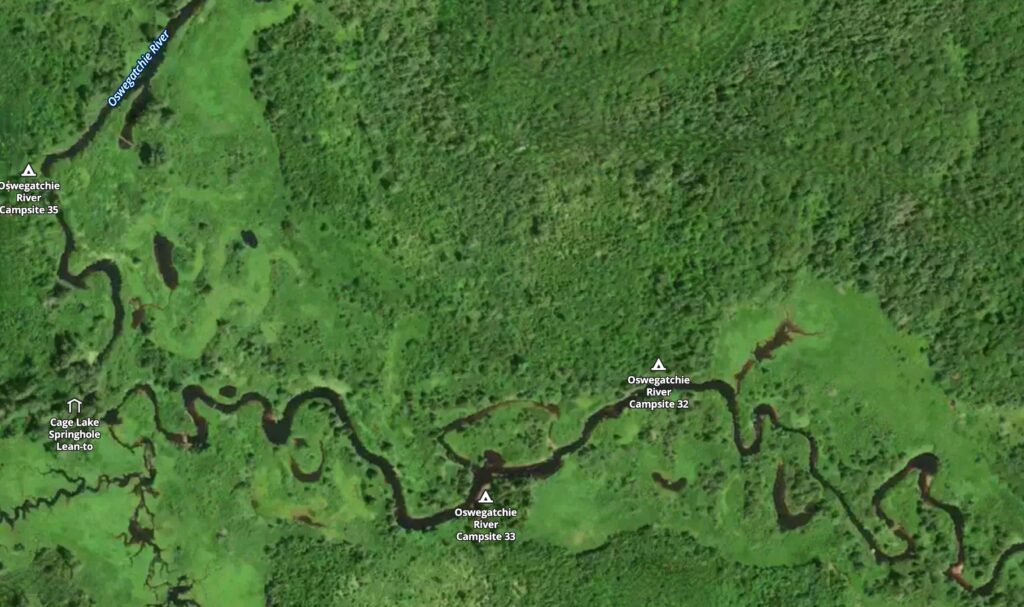
For the most part, the Oswegatchie is flat water with no rapids. This has been a rainy spring and summer, so the river was full from bank to bank and there was noticeable current flowing. The major navigational challenge we faced were beaver dams– some old ones where all the sticks were grey with weathering, but some so new that the freshest branches still had green leaves on them. I’m grateful we had enough people to help guide and sometimes lift the boats up and over the dams.
Now for the camping in style bit– the river flows through a combination of marsh and forest, and in the forested parts there are quite a few established camp sites. The one we really wanted the first night was occupied, so we put in a few more miles until we came to a suitable alternative that was well maintained and not too overgrown.
We took full advantage of the cargo capabilities of our fleet of canoes– we had delicious fresh food every day thanks to masterfully packed coolers, camp stoves, and a stellar chef. We had tables so we weren’t prepping food, cooking, and washing up on the ground.

We had a tarp large enough to keep us all dry during the daily cloudbursts. While it rained every day, we were fortunate that it never rained while we were paddling or while we were trying to pack up camp. I really hate trying to pack up my tent in the rain!
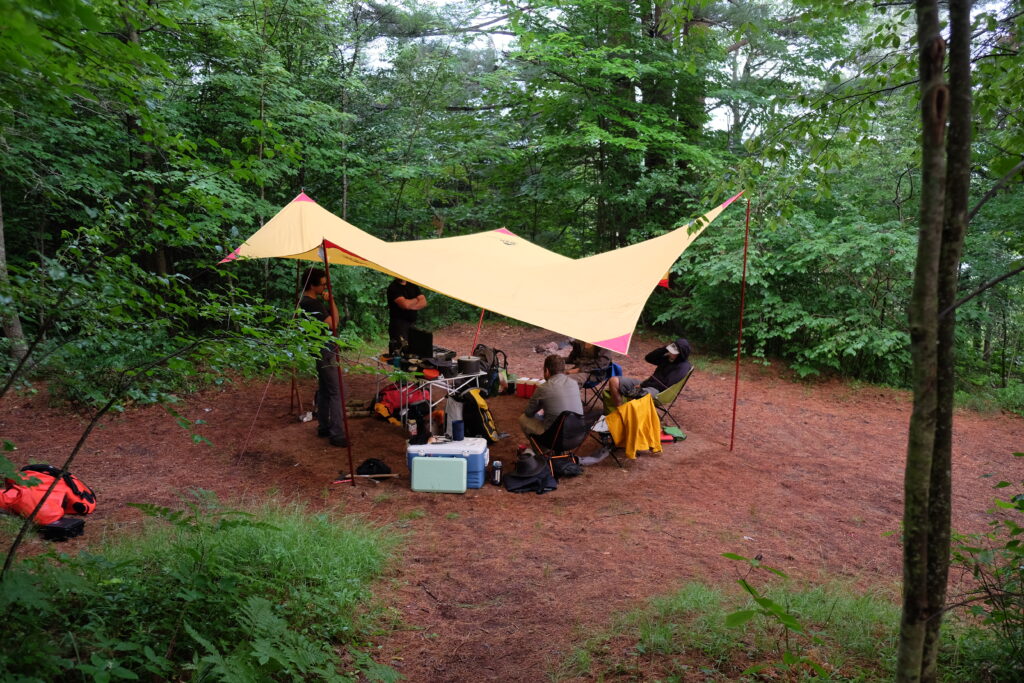
With the luxury of cargo space in the boats, our group may have been a little bit over prepared. Among eight people we had four axes, three saws, three group-sized water filtration systems and at least one more personal-sized filter plus chemical options for water purification. We had eight first aid kits and at least sixteen headlamps among us. Three of us brought backpacking camp stoves in addition to Coleman stoves we had for group cooking, and so, so many snacks! I feel like each of us brought all the stuff we would need to spend 5 days in the wilderness solo, and when you add the group gear on top of that, we could have stayed out a month together! The only thing we could have used more of was bug spray– the mosquitos, horse flies, and black flies were all abundant and biting fiercely.
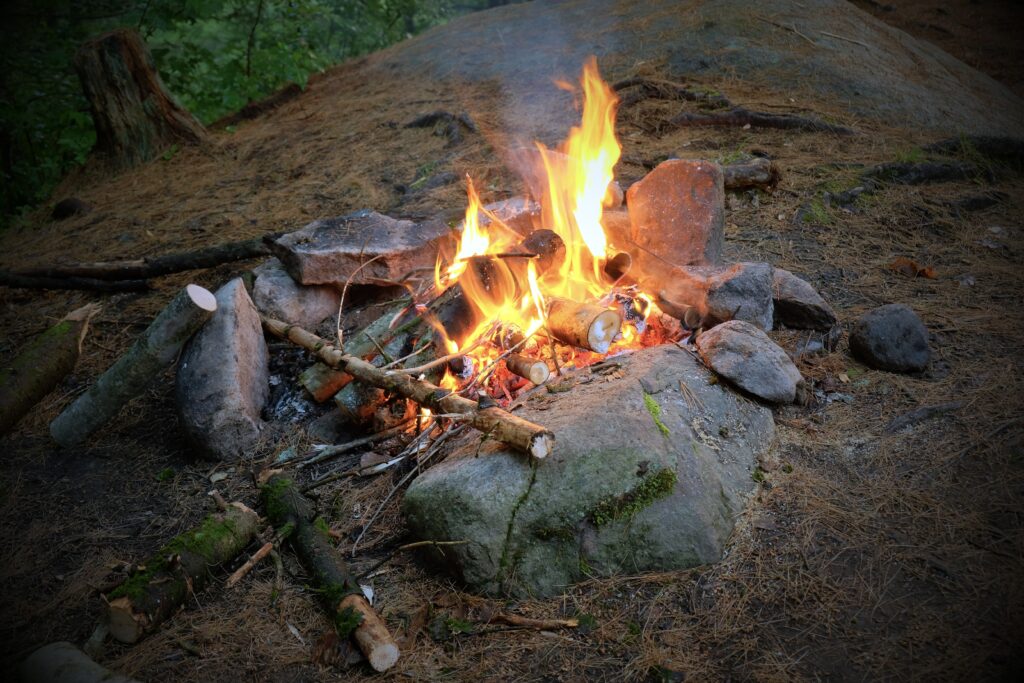
We paddled upstream for two days, and then set up camp at High Falls for a day of loafing in the wilderness with no paddling miles to make. I was grateful for a recovery day. We could have taken some day hikes from there, but opted to stay closer to camp, partly due to thunderstorms in the forecast. We swam in the river between showers, though my enthusiasm was somewhat dampened when we discovered leeches of prodigious size living in the still water below the falls. The leeches (tentative ID as Macrobdella decora) are both horrifying and fascinating, as they move along the bottom through the extend/contract motion of an earthworm, assisted by suckers on both ends, and swim with an elegant undulating motion. I wouldn’t want to find one attached to my flesh, however. I’d already fed enough mosquitos with my blood.
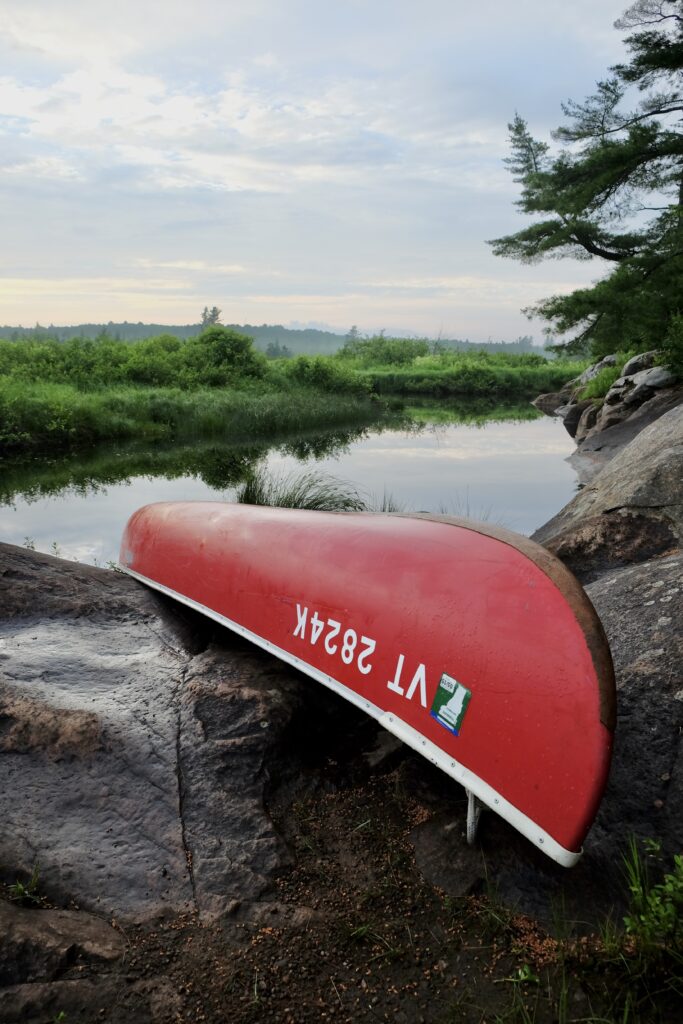
On the fourth day we headed back downriver. Paddling with the current we cruised downstream most of the way back to our starting point. We stopped at what became my favorite campsite of the trip, where had a brief thunderstorm followed by enough clearing to have a spectacular sunset.
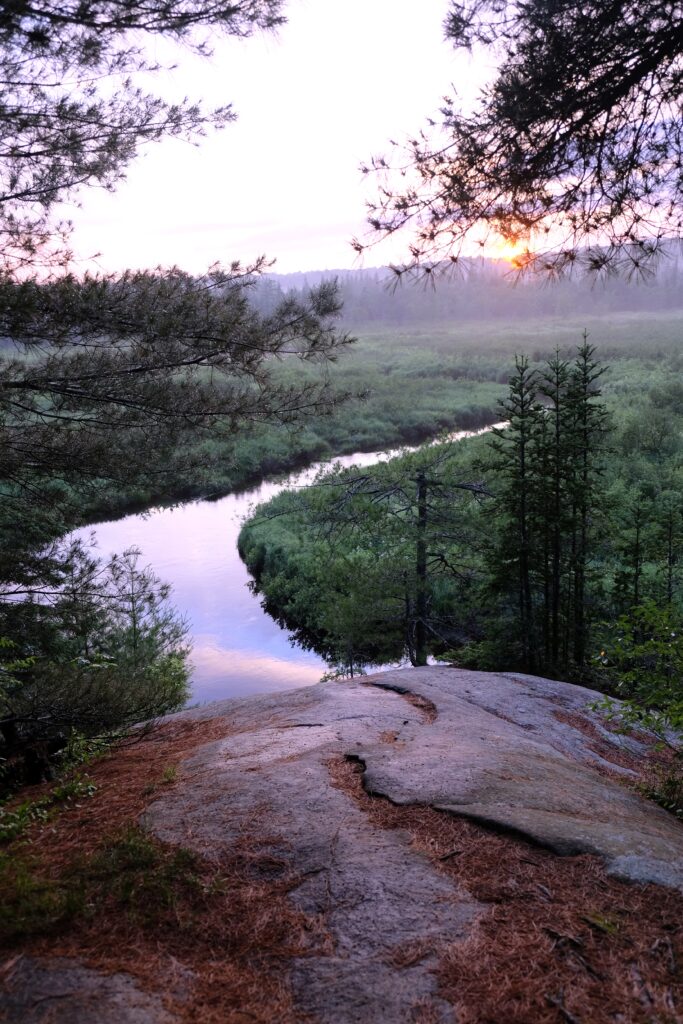
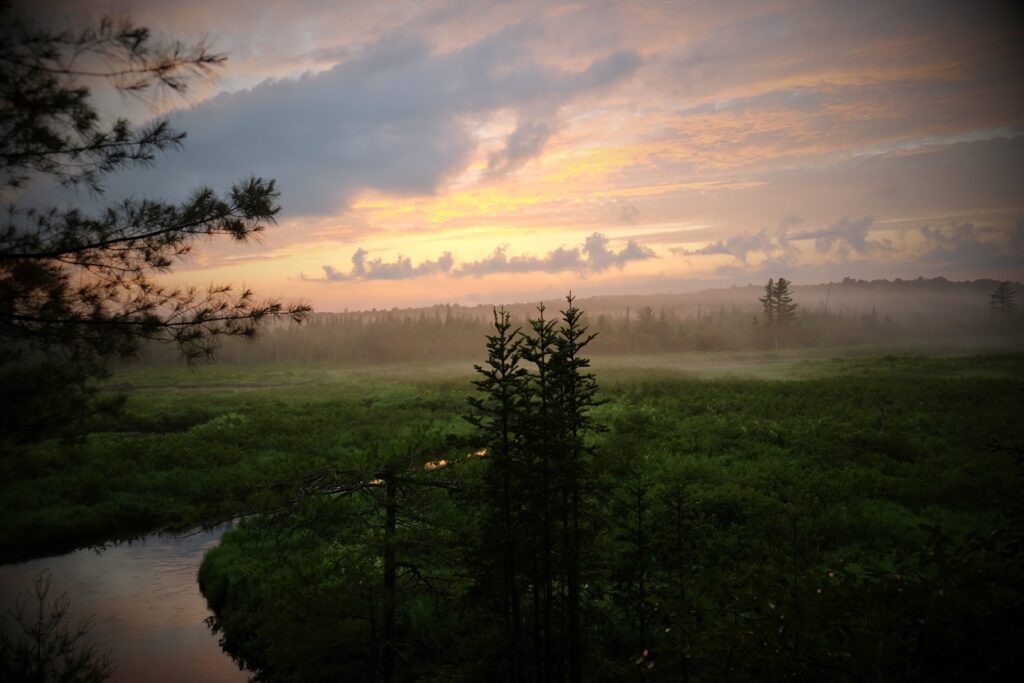
We only had to paddle for another hour the final morning to reach our cars. By then everything I had with me was damp, wet, or smelly (including myself). I’m so glad I left a clean and dry change of clothes in my car for the drive home.

